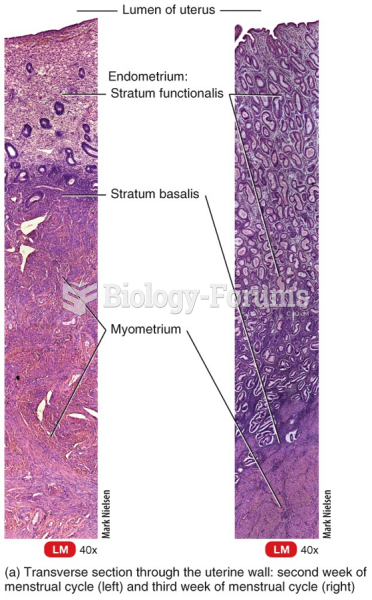|
|
|
The first oral chemotherapy drug for colon cancer was approved by FDA in 2001.
Illicit drug use costs the United States approximately $181 billion every year.
Glaucoma is a leading cause of blindness. As of yet, there is no cure. Everyone is at risk, and there may be no warning signs. It is six to eight times more common in African Americans than in whites. The best and most effective way to detect glaucoma is to receive a dilated eye examination.
When blood is deoxygenated and flowing back to the heart through the veins, it is dark reddish-blue in color. Blood in the arteries that is oxygenated and flowing out to the body is bright red. Whereas arterial blood comes out in spurts, venous blood flows.
A seasonal flu vaccine is the best way to reduce the chances you will get seasonal influenza and spread it to others.







